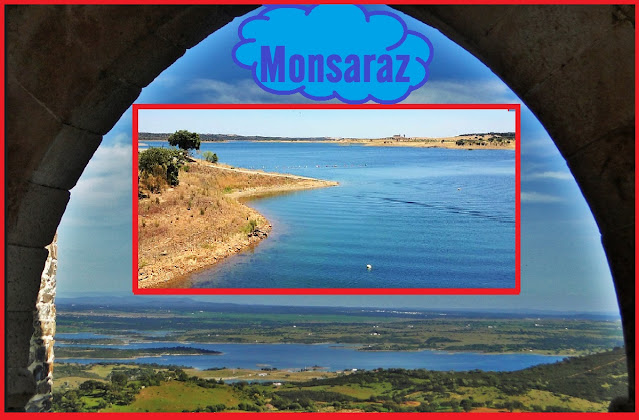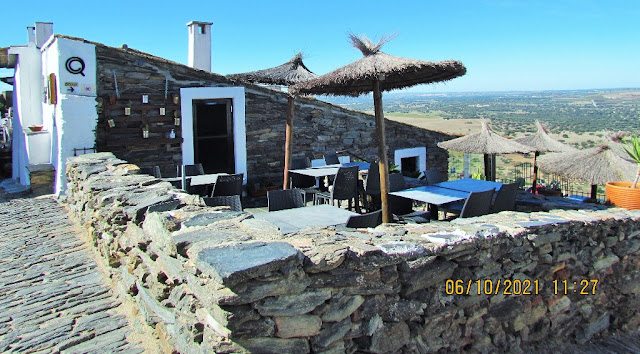MONSARAZ
38.444º N; 7.381º W
The privileged location of Monsaraz, situated at the top of the hill and overlooking the Guadiana is one of the most splendid viewpoints over the wonderful lake of the Alqueva Dam, the largest artificial lake in Europe.
Monsaraz is a civil parish (freguesia) of the municipality of Reguengos de Monsaraz, on the right margin of the Guadiana River in the Portuguese Alentejo region, near its border with Spain. The population in 2011 was 782, in an area of 88.29 km².Due to its geographic position, the hilltop of Monsaraz always occupied an important place in the history of the municipality, having been occupied by different peoples since the pre-historical record. It is one of the oldest Portuguese settlements of southern Portugal, occupied since pre-history, whose examples of permanent habitation include hundreds of megalithic monuments. These include the neolithic remains of Megalithic Monuments of Herdade de Xerez, Olival da Pega Dolmens, Menhir of Bulhoa, Rocha dos Namorados Menhir and Outeiro Menhir. The hill, on which the main settlement is located, was a pre-historic fortification, or Castro, that was the basis of pre-Roman occupation and funerary temples, carved from the local rock.
Monsaraz was reorganized during the Roman occupation, and was later successively occupied by the Visigoths, Arabs, Mozarabs, Jews, and, after the Reconquista, Christians loyal to King Afonso Henriques. In the 8th century, Monsaraz fell under the dominion of Arab forces who occupied the Iberian Peninsula.
Its naturally prominent position, being the highest hill in the area as well as its proximity to the deep Guadiana valley, made it a location of strategic importance.
In 1167, the Castle and medina were taken by Geraldo Sem Pavor, in an expedition that came from Évora (which had just been retaken, about the same time). After, Afonso Henriques' defeat in Badajoz, Monsaraz was once again taken by Muslim forces. In 1232, supported by the Knights Templar, King Sancho II definitively retook the citadel and town, placing it under the control of the Templars, and obligating them to establish a garrison that would protect the border.
In 1263 it was already an important fortress, being the head of a municipality, with large privileges. The local economy was fundamentally based on agriculture and livestock, existing some small artisanal industries producing terra cotta earthenware and hammered copper.
💓💓💓💓💓
SEARCH IN ALPHABETICAL ORDER
IN THE DISTRICT OF ÉVORA

Mora;
💓💓💓💓💓
Return to mainland Portugal &
the Azores and Madeira islands





























































































































































































